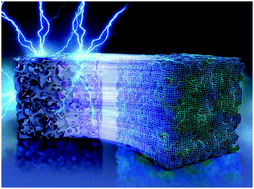Towards the digitalisation of porous energy materials: evolution of digital approaches for microstructural design
Abstract
Porous energy materials are essential components of many energy devices and systems, the development of which have been long plagued by two main challenges. The first is the ‘curse of dimensionality’, i.e. the complex structure–property relationships of energy materials are largely determined by a high-dimensional parameter space. The second challenge is the low efficiency of optimisation/discovery techniques for new energy materials. Digitalisation of porous energy materials is currently being considered as one of the most promising solutions to tackle these issues by transforming all material information into the digital space using reconstruction and imaging data and fusing this with various computational methods. With the help of material digitalisation, the rapid characterisation, the prediction of properties, and the autonomous optimisation of new energy materials can be achieved by using advanced mathematical algorithms. In this paper, we review the evolution of these computational and digital approaches and their typical applications in studying various porous energy materials and devices. Particularly, we address the recent progress of artificial intelligence (AI) in porous energy materials and highlight the successful application of several deep learning methods in microstructural reconstruction and generation, property prediction, and the performance optimisation of energy materials in service. We also provide a perspective on the potential of deep learning methods in achieving autonomous optimisation and discovery of new porous energy materials based on advanced computational modelling and AI techniques.



 Please wait while we load your content...
Please wait while we load your content...